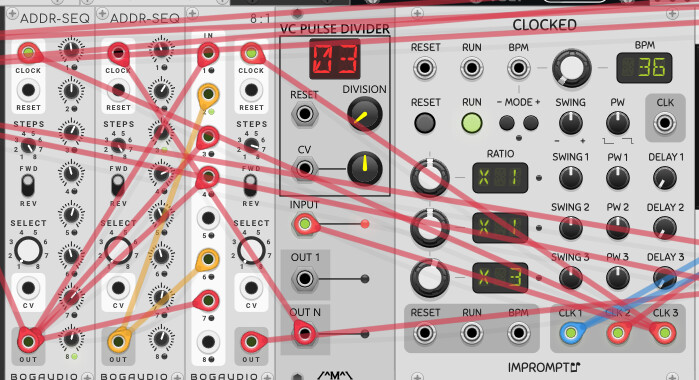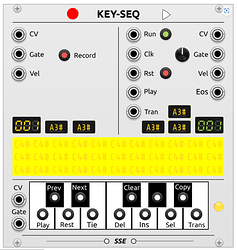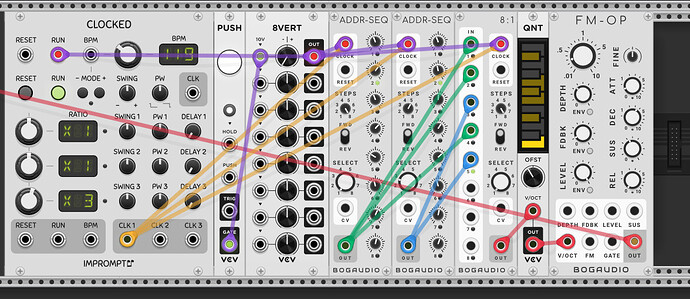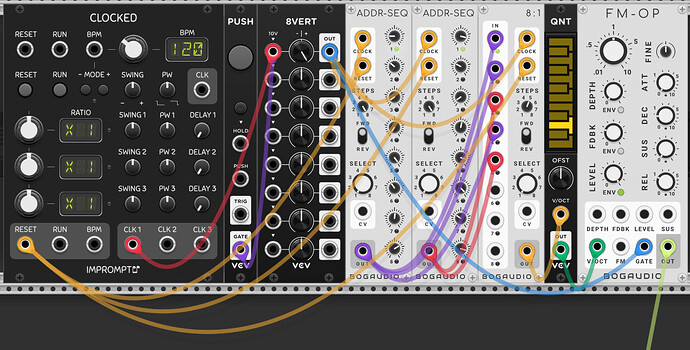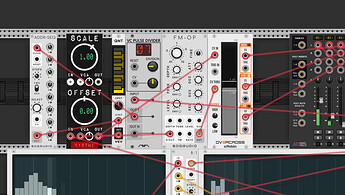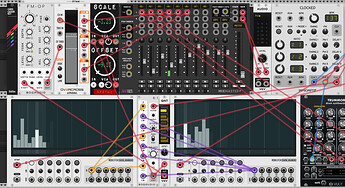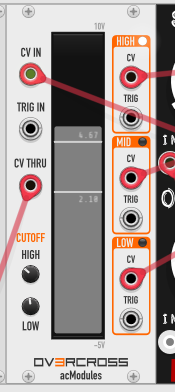This is going to be so useful when i get lost in the pattern. To rewind and ZAP out the dull step.
What i tought to ask, when i hoover the mouse over the encoder of the sequencer, VCV rack displayes the Volt. Is it possible to also display the pitch info next to it then?
Much appretiated,thanks =) This will do the trick when looking for finding the dull step. If I could see the complete pitch pattern in each sequencer and swich like this:
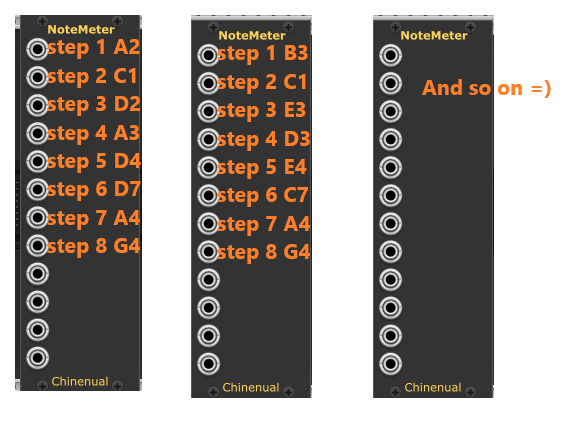
Then i would get a better understanding on what is causing the surprises that adamjAdam Murray mentions and will learn better how to set up the sequencers in conjuction with the swith and clocks to create new sequences according to my taste.
I am using this pulse divider now. It easier to calculate what division is needed in order to get the second sequencer to switch one step per cycle with this one than by setting up clock divisions on the master clock. Also what happened was that with the division encoder now its more fun to set up odd divisions so i get the second sequencer to switch steps in an oddly fashion.
And one can understand more about how the number of steps on each sequencer + clock devisions affect what pitches will end up in the switch.
Hello again Adam, what I could not express yesterday is that I can visiualise how to use the window comparator as you are describing to group pitches in order to transpose them. What i am curious to understand better is how you will use the window comparator for “changing/modulating/impovising” the pitches on the main sequence (I:E the switch) with the window comparator =)
Maybe this could be a part of the solution. I also tried to flip the quantizer to place it horizontally. without success. I found this one, but unfortunately the front panel is static so it neither blinks or displays what keys are active from front panel.
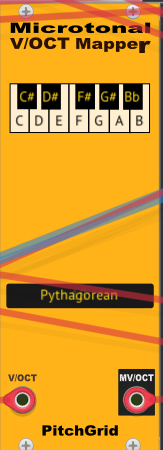
I like VCV quantizer because it shows the current note(s) as a highlighted color across its keyboard style note selector. I also like the SickoQuant4 for many features it has. Namely you can save your quants as presets and call them with CV from another sequencer like ADDR and like that change keys or chords. Another fun feature is the offset input to push notes up or down the range within your quant. I sometimes put VCV quantizer after to see the end result note.
I can only get to where i freeze the pulse with the HOLD on push, i cannot get reversed pulses.I also tried different inputs on the “clocked” main clock. =/
This works perfectly
Remove the run cable from the clock, and connect the clock to the 8vert. Connect the reset to the seqs and 8:1 and set the bog stuff to
![]()
Then turn the 8vert to negative to go backwArds and positive to go forwards.
BackAndForth.vcvs (12.2 KB)
Now its like a robot that listens to everything I say.
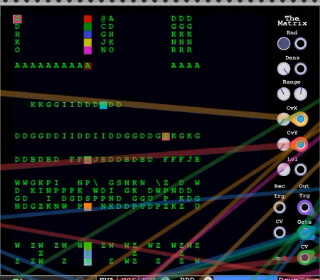
![]()
Hello =) To the left there, i made a sequenced transpose mechanism out of a Offset VCA, sequencer, clock divider. The sequencer makes a detour to that second quantizer so I can see visualizations of how many keys the sequence is transposed. This is my first patch without hand holding =). Im curious to discover next how the comparators can transpose only a group of steps in the pattern.
![]()
and this:
“Back at the top-level sequence, you can have different subsequence on another step, but maybe you do not want to use this subsequence all the time. So you make a very slow sequence that enables a gate once in a while, and only apply the other subsequence sometimes”
Starting > "So you make a very slow sequence that enables a gate once in a while, and only apply the other subsequence sometimes”
3 steps with the highest pitch (1) in left and (2) in right sequencer comes together in the switch nicely in most cycles and in some cycles they are one to many. So what i am thinking now is how to lower the pitch only in the “to crowded” cycles with comparators.
Now abow are digital sequencer and i could switch to this:
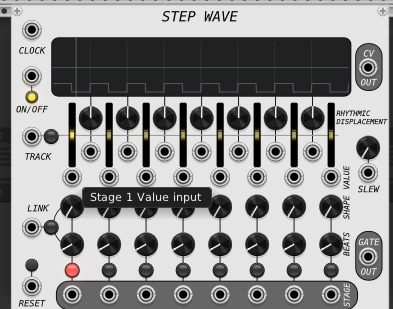
And have a subsequencer alter that step between one high and one low pitch. But that would not be a precise method. So now the question is how to use comparators or logic maybe? To get something to understand that there are to many high pitches in the switch now.
Something with gates maybe.
Comparators make gates. And they use some conditions about an A and B signal. Some comparators also use a knob for the B offset, so when you patch A you can offset the B level by knob turn. So say you use the level of the high pitch split as your B level voltage, then when A signals go above B you get a gate. You could pair with an accumulator or counter to go off when a certain number of high gates is reached, invert and offset that gate to control level somewhere down patch.
It shall be so.
This one even has inverted output already.

